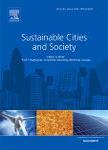版权所有:内蒙古大学图书馆 技术提供:维普资讯• 智图
内蒙古自治区呼和浩特市赛罕区大学西街235号 邮编: 010021

作者机构:Ozyegin Univ Fac Architecture & Design Cekmekoy Kampusu Nisantepe Mah Orman Sok TR-34794 Istanbul Turkey Beykoz Univ Fac Engn & Architecture Istanbul Turkey Ozyegin Univ Inst Sci & Technol Comp Sci Doctoral Program Istanbul Turkey Istanbul Tech Univ Inst Sci & Technol Urban Design Master Program Istanbul Turkey Ozyegin Univ Fac Engn Istanbul Turkey
出 版 物:《SUSTAINABLE CITIES AND SOCIETY》 (Sustainable Cities Soc.)
年 卷 期:2019年第45卷
页 面:131-142页
核心收录:
学科分类:0820[工学-石油与天然气工程] 082803[工学-农业生物环境与能源工程] 08[工学] 0828[工学-农业工程] 0814[工学-土木工程] 0833[工学-城乡规划学]
基 金:TUBITAK (The Scientific and Technical Research Council of Turkey) [115Y225]
主 题:Pedestrian tracking Spatio-temporal mapping Outdoor spaces Occupancy pattern Sustainable campus Logistic geographically weighted regression
摘 要:The design of a livable and comfortable environment has been one of the main aims of sustainable university campus design. The creation of outdoor spaces for accommodating amenities has a positive effect on users with regard to various physiological and psychological aspects. Knowing how daily activity patterns and pedestrian movements are distributed across space is important for assessing whether or not human use and design plans are in fact successful. The aim of this study is to determine occupancy patterns and pedestrian routes in outdoor spaces during different seasons at a sustainable university campus by using spatial statistical analyses that involve ANN, MC and SDE. To perform these analyses, the researchers attempted to use a pedestrian tracking method from camera surveillance to aggregate the required data by conducing a longitudinal study. The data that were aggregated by pedestrian tracking was visualized with the use of a spatio-temporal mapping method in GIS. Logistic GWR was performed to seek the relationship between occupancy pattern (clustered distribution) and design layout of open spaces, comprising the variables of proximity to the attraction centers/entrances, and visual integration. The results confirmed that occupants prefer to use the areas that have high visual integration value and are close to attraction centers.